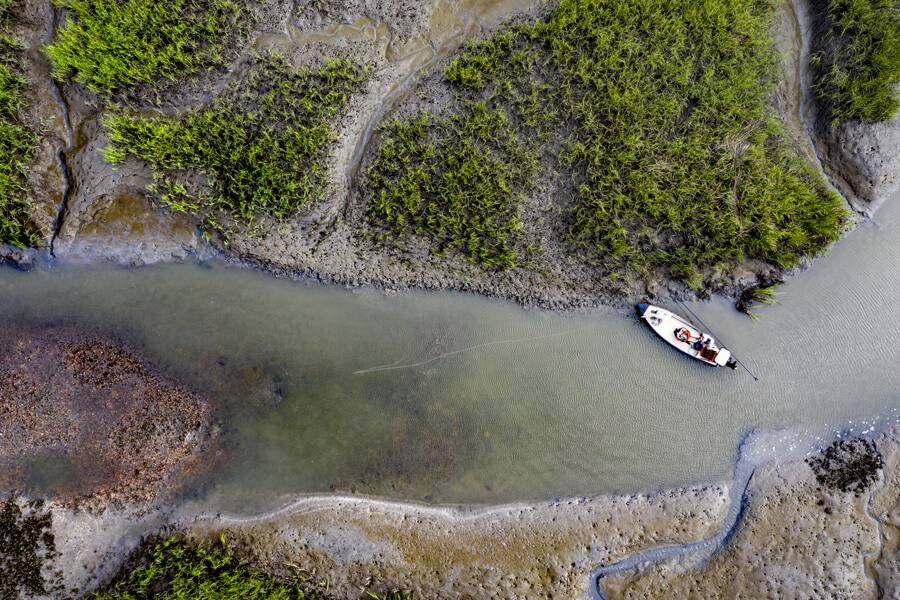South Carolina’s Lowcountry is a world-class fly fishing destination right here in the United States, just a short road trip away from many of the country’s bustling metropolises. The beauty of the Lowcountry marshes is reason enough to make the trek, of course–but its redfish nudge South Carolina into the must-do column. In fact, Lowcountry redfish are the perfect saltwater fly fishing target.
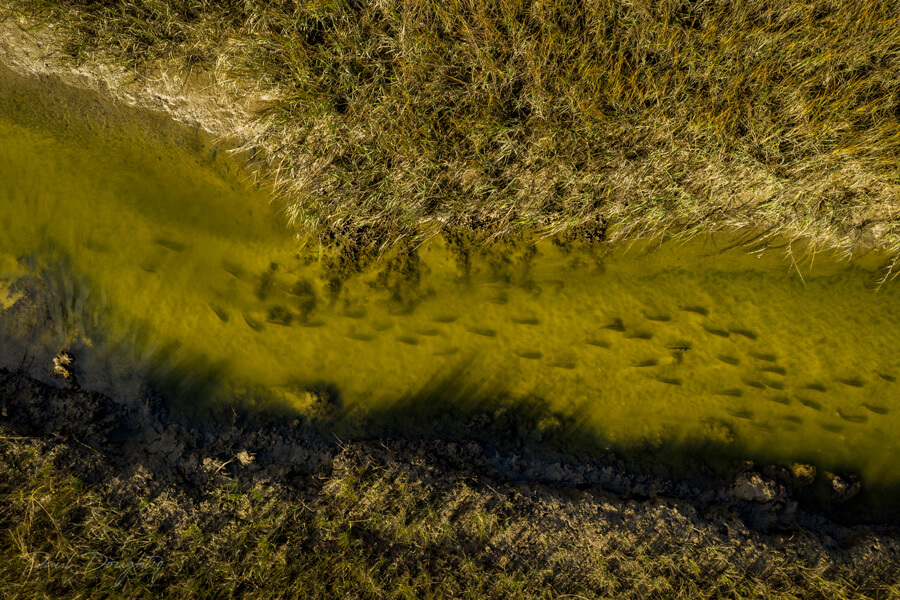 What makes redfish so perfect? First, anglers can sight cast to them, thereby getting in some technical fishing. Second, pound for pound, redfish are a hard-fighting species. And finally, they’re just absolutely beautiful. Fly anglers can pursue redfish all year, but a fall fishing trip is ideal: Beginning in September and October, when late-summer heat gives way to more moderate autumn weather, redfish sense the falling water temperatures and change their behavior dramatically. Instinctively recognizing that their forage is about to disappear, they begin to feed heavily at all times and in places where they usually would not. When this happens, fly anglers interested in exciting sight fishing will want to target redfish in three specific habitats: High tide flats, low tide flats, and small creeks.
What makes redfish so perfect? First, anglers can sight cast to them, thereby getting in some technical fishing. Second, pound for pound, redfish are a hard-fighting species. And finally, they’re just absolutely beautiful. Fly anglers can pursue redfish all year, but a fall fishing trip is ideal: Beginning in September and October, when late-summer heat gives way to more moderate autumn weather, redfish sense the falling water temperatures and change their behavior dramatically. Instinctively recognizing that their forage is about to disappear, they begin to feed heavily at all times and in places where they usually would not. When this happens, fly anglers interested in exciting sight fishing will want to target redfish in three specific habitats: High tide flats, low tide flats, and small creeks.
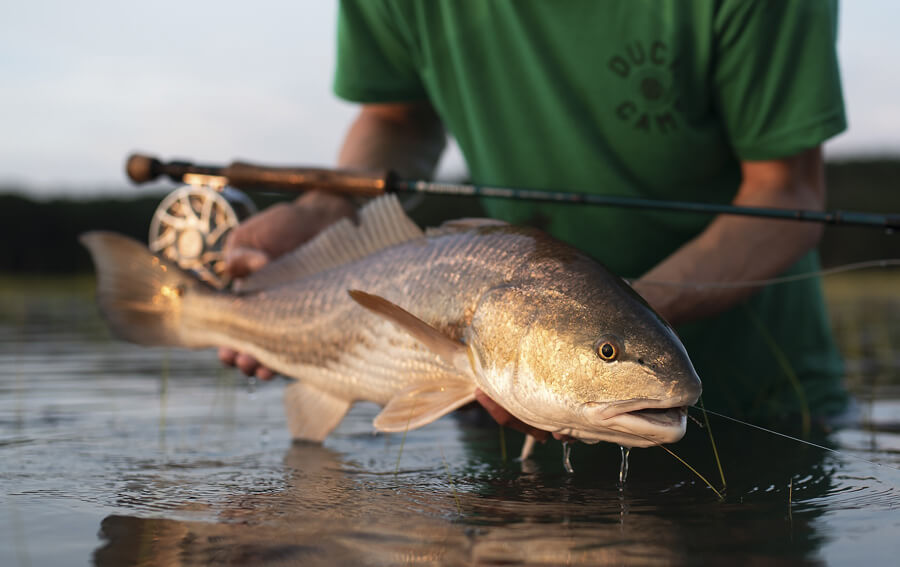
High tide flats fishing, possible in only a few places in the world, is plentiful in the Lowcountry in autumn. Around the full and new moons the tides are abnormally high; water floods up into the spartina grass surrounding the creeks, creating a field of flooded grass in which redfish may gorge on crabs. As the stronger-than-normal current comes into the marshes, redfish take the opportunity to go deep in the grasses to hide from predators and procure an easy meal. When they stop to slurp up crabs in the shallow flooded marsh, redfish often stick their tails straight up in the air, which indicates their position to the fly angler hoping to sight cast with a fly rod and weedless fly. Determine the direction the redfish is headed and place the fly just a few feet in front of it. Make short strips just as he gets to the fly. Redfish anglers generally don’t suffer for lack of feedback, because redfish either hammer a fly–in which case line will commence screaming out of your hands–or spook off, leaving only a wake and shaky knees behind them.
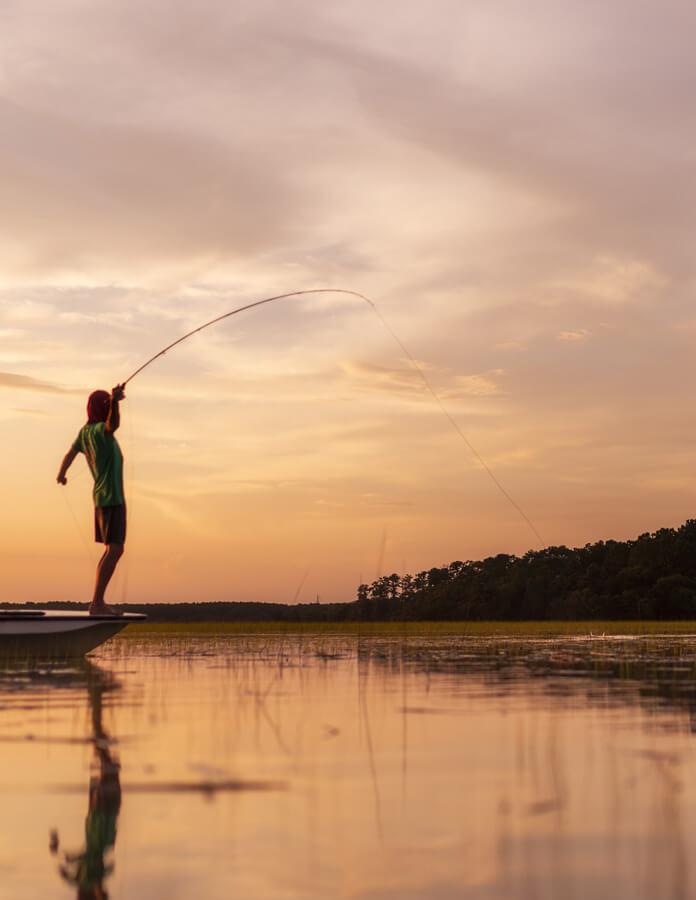 A low tide flat is a large muddy area that holds at least a little bit of water even at the lowest of low tides; redfish love these low tide flats especially because their number-one predator, the bottlenose dolphin, hates them. Dolphins love a meal of redfish, but they’re careful to avoid very shallow water, especially at falling tide. Low tide flats also usually feature numerous oyster mounds that serve as “structure” for redfish. Growing schools of redfish will swim around and around from one oyster bed to another, feeding on anything in their path as temperatures continue to dip.
A low tide flat is a large muddy area that holds at least a little bit of water even at the lowest of low tides; redfish love these low tide flats especially because their number-one predator, the bottlenose dolphin, hates them. Dolphins love a meal of redfish, but they’re careful to avoid very shallow water, especially at falling tide. Low tide flats also usually feature numerous oyster mounds that serve as “structure” for redfish. Growing schools of redfish will swim around and around from one oyster bed to another, feeding on anything in their path as temperatures continue to dip.
Redfish make long blistering runs in these large muddy flats because they have nowhere to go but out and away from the skiff. From fall through winter, Lowcountry low tide flats fishing provides exceptional sight-casting opportunities because the water is so clear: When you enter a flat you can often see the redfish exploding on baitfish and shrimp in large schools from 50 yards away. A trip to the low tide flat is also great for newcomers to fly fishing: Larger schools of fish mean anglers can usually get a few good shots before the school is spooked–and even after that, there are still more schools remaining.
Creek fishing is my personal favorite for many reasons, but especially because I enjoy the idea of catching a big fish in a small creek. When you set the hook on a 30-inch redfish in a 10-foot-wide creek, you’d better have brought your A game because there’s no telling where that fish will decide to go. It may head around the corner 60 yards in the creek to wrap you around grass. It may try to break you off on the nearest oyster bed. It may head straight for you under the boat and out of the creek. Redfish like the shallow creek for the same reason they like the flats: These habitats are difficult for predators–both human and dolphin–to access.
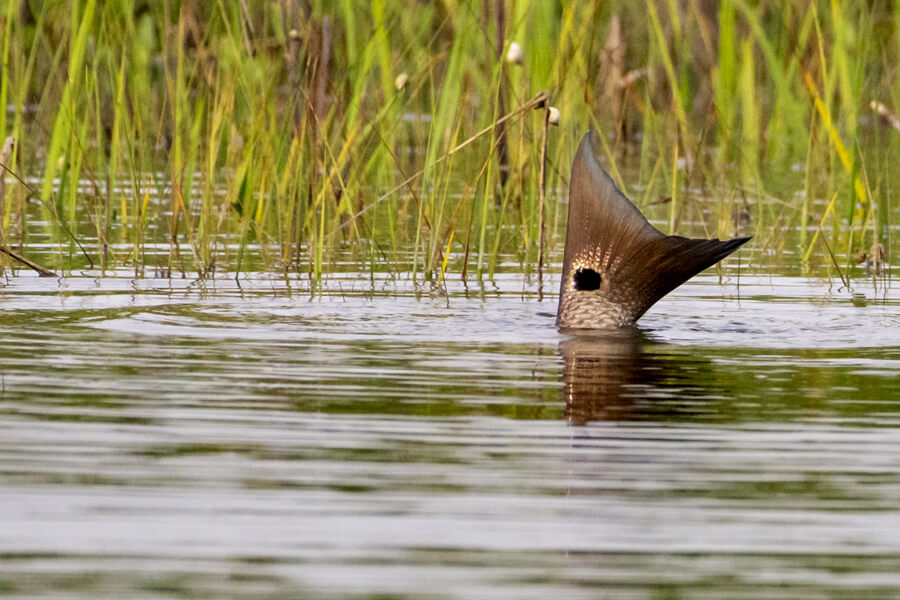
Redfish will push far up into the shallowest part of the creeks at low tide to feed and to hide–and that is precisely when we like to target them with fly rods. Pole silently up a tiny creek on a crisp fall morning and spot schools of large 20- to 30-inch fish busting on baitfish, their backs and tails out of the water–and shaky knees and intense memories are all but guaranteed.
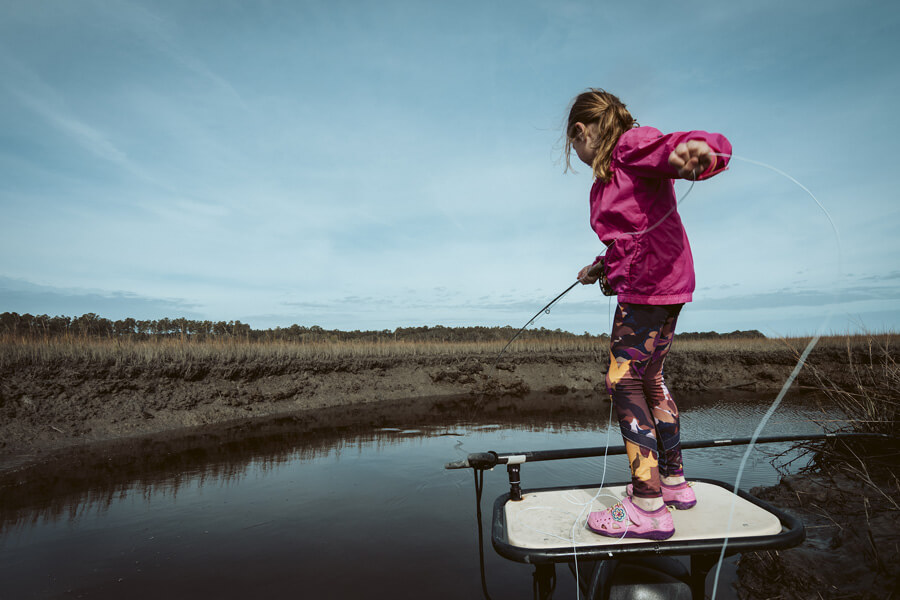
The sights, smells, and sounds of the marsh draw angling novices to South Carolina every year; the delights of the fishery ensure that even the most experienced fly anglers never want to leave. Hiding in plain sight, a short drive and a world away from the East Coast’s bustling cities, South Carolina’s Lowcountry redfish are the only excuse a fly angler needs to schedule a fall road trip.
Photos by Paul Doughty
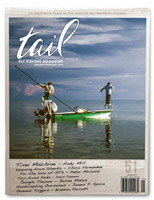 SUBSCRIBE TO TAIL FLY FISHING MAGAZINE
SUBSCRIBE TO TAIL FLY FISHING MAGAZINE
Fly Fishing the Lowcountry – Part Three: Migratory Species of the Lowcountry

